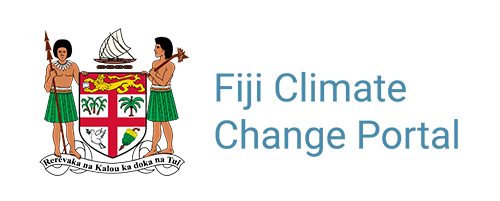Enhancing climate adaptation in Fiji through scaling up the coastal inundation forecasting early warning system
Project Details
Project Information
Description
Scaling up the Coastal Inundation Forecasting Demonstration Project (CIFDP), this project will enhance the early warning systems and replicate the forecasting system to the remaining key coastal areas in Fiji. This project seeks to implement innovative technical and social solutions to climate adaptation, adopting regionally new technologies and socially inclusive approaches to build resilience of communities-at-risk.
This project will directly benefit all coastal communities in the two most populated islands of Viti Levu and Vanua Levu. It will also strengthen partnerships between non-profit organizations (NGOs), government institutions and FMS to coordinate information and warnings. In addition, it will build the capacity of Fiji to integrate science into climate strategies and policy with constructed databases. As co-benefits, this project will generate enhanced forecasting products for neighboring Pacific countries through the Regionalized Specialized Meteorological Service (RSMC) in Nadi.
Objectives
The overall goal of this project is to enhance Fiji’s capacity to prepare for and respond to natural hazards induced from climate change, through scaling up its coastal inundation forecasting early warning system. The project will strengthen capacity of forecasting competencies at an institutional level. Furthermore, the project will build resilience of communities-a-risk and industries by the coasts.
The goal of this project will be achieved through the following objectives:
• Enhance forecasting models and extend coastal inundation models to other key parts of Fiji ensuring early warnings for all major towns/villages.
• Integrate impact-based forecasting and multi-hazard early warning systems into the operations of FMS
• Streamline forecasting systems into a single interoperable system
• Create hazard risk mapping of coastal areas on central forecast geo-server
• Enhance public awareness on coastal inundation forecasting EWS, impact-based forecasting products and hazard risk maps.
• Build a data archive of meteorological hazards for coastal/marine events and their impacts
• Strengthen sectoral partnerships between government agencies, industries and NGOs.
Expected Outputs
1.1 Comprehensive assessment of the extent and level achieved, sustained and expanded from CIFDP since 2019
2.1 A streamlined and enhanced early warning system (CIF-EWS) for coastal inundation that is impact-based, expanded to cover additional key coastal inundation-prone areas of Fiji
3.1 Hazard risk maps highlighting high risk areas for inundation from swell, storm surge and river flooding adapted for use in impact-based forecasting (IBF)
3.2 Communities at risk and government institutions have access and are trained to interpret the hazard risk map
4.1 Centralized catalogue of meteorological events including marine/ coastal hazards, and related impacts
4.2 Database of meteorological and oceanographic observations
4.3 FMS staff trained to monitor and manage the event catalogue and metocean database
5.1 End-users including the social groups with special needs have access to tailor-made products and channels to give feedback on the products
5.2 Sector-specific CIF-EWS forecast products are developed and used by various end users including the industries
5.3 Public awareness of coastal inundation is enhanced
6.1 Strengthened partnerships with government agencies and NGOs
6.2 Arrangement of data sharing system between sectors
Gender Relevant Information
The proposed project will improve gender equity and women's empowerment through a tool developed by WMO: Training Manual
for Gender Mainstreaming in End-to-End Early Warning System for Floods and Integrated Drought Management through a
Participatory Design Approach. Further in compliance with Adaptation Fund Gender Policy, Gender Action Plan will be developed.
This will increase the participation of women, girls and other vulnerable groups in flood and drought management activities and
decision-making processes.
Women's participation in disaster preparedness and decision-making is often limited due to cultural and social norms. There is
therefore a risk that negative effects are expected to be experienced disproportionately by women compared to men, and that
women will not benefit equally from the proposed adaptation measures and capacity development interventions. Participatory
planning of activities will ensure that women and representatives of women's groups are well represented as outlined in Annex I https://wmoomm-my.sharepoint.com/personal/sgrimes_wmo_int/_layouts/15/onedrive.aspx?id=%2Fpersonal%2Fsgrimes%5Fwmo%5Fint%2FDocuments%2FMAR%20Working%20Folder%2F3%2ECoastal%2FFIJI%5FAF%2FAF%5FConceptNOTE%2Fconceptnote%2FAnnex%2FFINALVERSION%5FShared%2FAnnexI%5FPreliminaryGenderAnalaysis%5FFiji%2Epdf&parent=%2Fpersonal%2Fsgrimes%5Fwmo%5Fint%2FDocuments%2FMAR%20Working%20Folder%2F3%2ECoastal%2FFIJI%5FAF%2FAF%5FConceptNOTE%2Fconceptnote%2FAnnex%2FFINALVERSION%5FShared&ga=1
Important Links
| Description | Link | Added Date |
|---|---|---|
| Adaptation Fund project information with concept note proposal from 04/2023 | https://www.adaptation-fund.org/project/enhancing-climate-adaptation-through-scaling-up-fijis-coastal-inundation-forecasting-early-warning-system/ | 2023-09-27 |
Important Links
| Description | Link | Added Date |
|---|---|---|
| Adaptation Fund project information with concept note proposal from 04/2023 | https://www.adaptation-fund.org/project/enhancing-climate-adaptation-through-scaling-up-fijis-coastal-inundation-forecasting-early-warning-system/ | 2023-09-27 |

